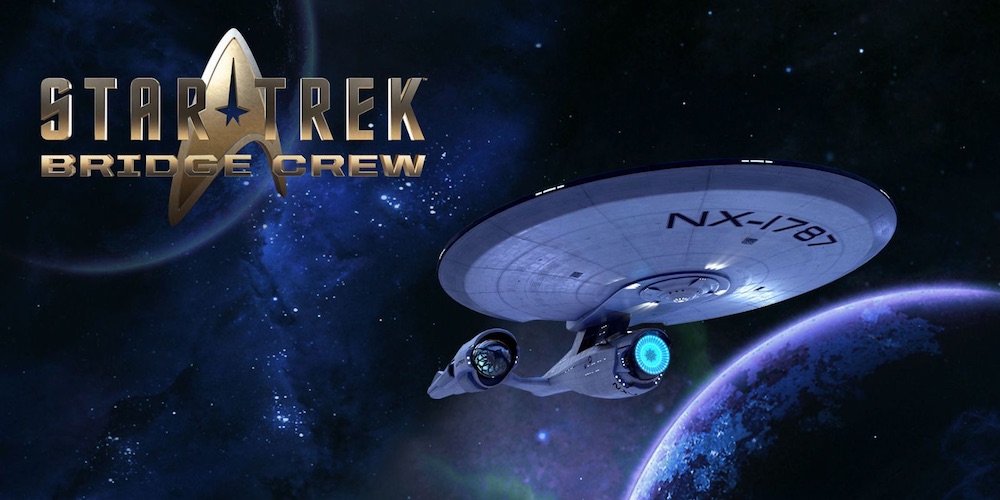
Before we get started, I should probably tell you that I’m possibly the biggest Star Trek fan that you’re ever likely to meet. I’m a walking encyclopaedia for the franchise, and I could take down pretty much anyone in a Trek-off, even my editor (yeah I said it Will, RED ALERT!). Because of that, this review is going to be jam packed with more references than tribbles in a grain bin. When I saw that Star Trek: Bridge Crew was coming up, I nearly broke the warp barrier with how fast I requested to review it. With multiple universes of Star Trek facts and history buzzing around my nearly-positronic-noggin, I had some ridiculously high expectations going into this game. That’s why I’m incredibly pleased to say that Red Storm Entertainment and Ubisoft knocked this one out of the holographic ballpark. So, how about you grab an earl grey or a raktajino, and I’ll tell you why…

“Ahh, still has that nice, new ship smell.”
I’m going steal a little thunder from my closing paragraph, but I have to say, right here at the top, that this is, in my opinion, the best Star Trek game ever made by far. Now that I think of it, it’s probably one of the best VR games ever as well. I’ve always said VR is amazing for making you feel like you’re part of the world and after my VIVE loading screen (which I’ve set to look like a holodeck grid, of course) faded away, Star Trek: Bridge Crew wasted absolutely no time pulling me into its universe. A gorgeous view of space is the first thing I saw as the publisher’s names flashed by and the title showed up, accompanied by a snippet of a new, yet familiar, musical score. Another fade and I find myself in a shuttlecraft, lazily floating around space dock in Earth’s orbit. This little ship acts as the main menu of the game, and while there is a lot to look at, the real Star Trek fan’s gaze instantly looks at where the shuttle is heading. Slowly, from behind the bulk of the station, the main character of the game emerges, an entirely new starship created for Star Trek: Bridge Crew, the beautiful U.S.S. Aegis.
The U.S.S. Aegis (pronounced e-jiss) is a starship firmly entrenched in the design and visuals of the JJ Abrams 2009 Star Trek reboot timeline, where the majority of this game takes place. While looking somewhat similar to its cinematic sister, the Aegis is a different design and class of ship altogether, something the main story explains a bit further. Regardless of how you look at her or how you feel about the reboot timeline, this ship came from people who know their Trek. I’m genuinely so happy with the design of this ship that I hope to see it show up in one of the new movies in some way. But hey, at this point, I’m still floating around in my shuttlecraft, just staring at it. I kid you not, I sat there for a good twenty minutes or so, just taking it all in. It was like meeting an old friend for the first time. I was even pleasantly surprised to notice that the Earth was very slowly rotating instead of just being part of the space backdrop.

“So, hey, what time does your shift end? How about you and me… wait, what? Klingons?! RED ALERT!”
After who knows how many vanity fly-bys of the ship, I finally decided to look at myself and try out my avatar. Star Trek: Bridge Crew has thankfully chosen to go with a full body and attached limbs, unlike Rick and Morty: Virtual Rick-ality, for example. While it was initially disorientating to see in-game arms moving as my real arms were moving, my brain rose to the challenge, and, very quickly, everything started to feel normal. Turning my attention back to the shuttlecraft, its console menu presented me with the story campaign, public and private free-play modes, and an avatar customizer. After happily playing around with the different species and genders (unlike Quark, having boobs is new to me!), I settled on a human male, tapped the campaign button and jumped into the actual game.
The main story of Star Trek: Bridge Crew isn’t all that long, with a prologue serving as a tutorial and five main missions fleshing out the plot, plus an additional side mission called the Kobayashi Maru, otherwise known as the “no-win scenario.” The campaign sets you as captain of the Aegis on a mission to a region of space called the Trench in search of a new home for the Vulcan people, establishing this game as taking place sometime after the reboot, but before 2013’s Star Trek Into Darkness. In your various tasks, you will explore the Trench and come face to face with its current occupants, the Klingons. Why they are so mobilised here and what this all means to you and your ship is doled out to you as progress through each mission. There is a decent balance between exploration, combat and rescue in the campaign missions, as well as a particularly enjoyable bout of cat and mouse that finds you fleeing from Klingon pursuers, sneaking from system to system until your warp drive comes back online. Some pretty tense stuff that happily reminded me of the episode “Balance of Terror” from The Original Series.
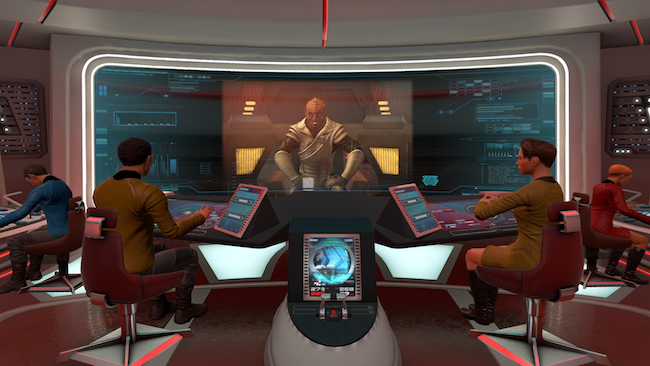
“poH Hegh! nuch DIvI’!” “Wait, what did you call my mother?!”
On that note, speaking of The Original Series, there can be no doubt one of the biggest draws for die-hard Trek fans was the announcement that the game would be including a faithful recreation of the bridge of the original Enterprise, and, I can say, it was worth the wait. The original Enterprise, as an alternative to the Aegis, is only playable in the “Ongoing Missions” section of the game, a mode that creates randomly generated encounters for you to free-play whenever you want. One mission might find you rescuing survivors of a ship in distress, while others will have you dodging Klingons or cataloguing gaseous anomalies. I can’t deny it would be cool to run through some proper story missions aboard the Enterprise, but without its original crew, it doesn’t feel quite right. Playing solo will find your AI chums from the Aegis throw on some original uniforms and take up the positions you’d typically find Kirk, Sulu, Chekov or Scotty occupying whenever you fly her around, but it’s not the same. To get the original cast onto that bridge would take some temporal trickery that would leave even the Squire of Gothos speechless, so perhaps it’s best left to free-play mode.
Now, what about those bridges? How do they hold up? Well, speaking for either ship, both are modelled incredibly well. Attention to detail is off the charts, especially aboard the Enterprise, which apart from a few tweaks to accommodate the medium of VR, is a near perfect reconstruction of the one from the TV show. There is something very charming about seeing impressive computer graphics so lovingly recreate things made out of cardboard, plastic, balsa wood and duct tape. The Aegis, on the other hand, being an entirely new ship, goes completely down the reboot path. Bright lights, shiny surfaces, see-through displays and bold, contrasting colours are all present, but thankfully no lens flares, unless you play around with the graphics and tilt your head at weird angles. The sound in Star Trek: Bridge Crew is also of particular note, with the ever present hum of the engines underlying every beep, boop, whistle and warning. There is an immensely satisfying *THWUMPF* as you jump in or out of warp, accompanied by an exhilarating feeling of speed and motion as the screen blurs. The muffled effects of weapons, impacts and explosions travel to you from outside the ship but still sound great. The Star Trek series has almost always disregarded that whole “no sound in space” thing, and it’s back here in this game, ignored all the same. Chatter is also especially notable, with AI crew regularly chiming in with suggestions, activity reports, or simply just talking amongst themselves about maintenance, a problem with the warp core, or the phase inducers or some other damn thing. Under all this is a brilliant musical score that changes to suit various circumstances, from lonely feelings in deep space to tense, fast-paced combat and everything in between. All of this creates a truly perfect sense of immersion. Sitting back in my captain’s chair and taking it all in, I think I’ve found my very own Nexus, and I didn’t even have to blow up a star to get here!
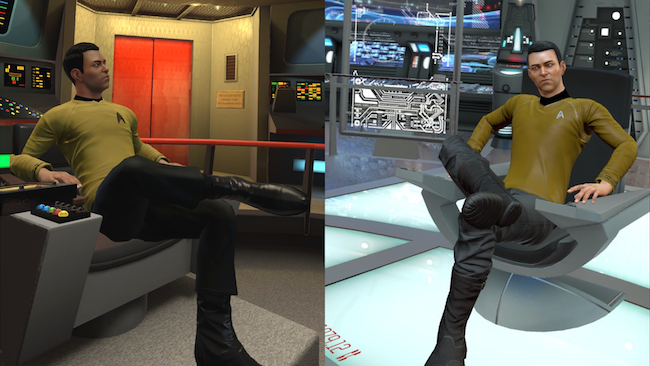
“Who wore it better?”
When you begin a campaign or free-play mission, you and any friends you might have along for the ride can pick your stations, namely tactical, helm, engineering and, of course, captain. Each position has its own unique and well-defined range of abilities, and they’re all designed very well. Tactical puts you in control of the offensive and defensive abilities of your ship but also finds you running scans of anomalies or other ships to determine their status, potential hazards, running transporters as well as initiating computer intrusions to deactivate enemy wessels weapons, engines or lower shields. Taking the helm puts you behind the wheel of the starship you picked as you swerve and swoop through asteroid fields, dodge torpedoes, move around systems at impulse, or jump to others at warp. If you’re piloting the Aegis, you even get to pull down on that shiny handle and *THWUMPF* the ship into warp yourself, which, as I said before, is immensely satisfying. Whoever picks the engineering position is tasked with seeing to the general well-being of the ship, such as organising repair crews to damaged sections, rerouting power to compensate for affected systems and often givin’ her all she’s got to win in a firefight or escape to warp.
Lastly, there is the captain. Whoever picks this station receives mission information, answers incoming hails, calls red alert and from their position can see and interact with each officer in a limited but suitable capacity. As the game is heavily focussed on verbal communication when playing with real people, it’s the job of the captain to mobilise their crew and ensure everyone works toward completing the mission. Someone who isn’t capable of leading will very quickly find their ship in a mess and probably end up getting their whole crew killed. My first few outings would have given Bones many an opportunity to say “He’s dead, Jim!” but I improved quickly playing with the right people. After ten or so rounds with a buddy, we were functioning on a level that was a sight to behold. We knew what each other was capable of to the point that the simple orders, like “scan that ship” or “shields up!” didn’t need to be said anymore.
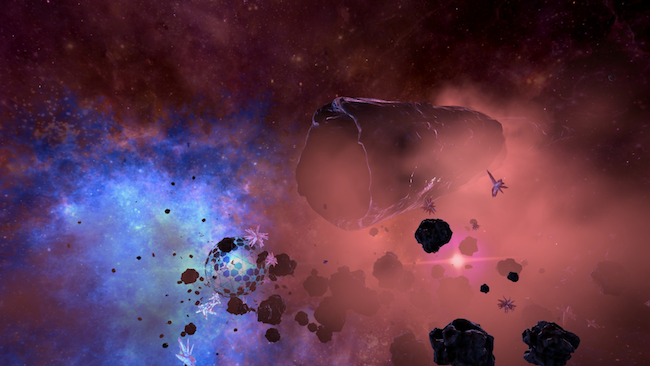
“Never a Decker around when you need one…”
If you want to play alone, you totally can because in most cases the AI crew is more than capable of carrying out your orders and responds almost as well as a real player could. As I said before, the captain can interact with each station and issue orders, for example, “go to warp,” which the helm AI will then perform each step (charge the warp coils, align the ship, etc.) to carry out the order. This method is a very effective way to maintain control over your ship while freeing up the time to focus on other matters. It’s particularly useful when you find yourself giving these orders amidst a barrage of torpedoes from three Klingon D5 warbirds, two Birds of Prey and your bridge has started exploding into flames all around you. In a pinch, you can even assume control of each station from its AI officer with a simple press on your VR controller and do things yourself, kinda like Riker and his joystick… uh, I mean, manual steering column. I rarely found myself needing to do this, except in the few instances where helmsman Rao thought the fastest way to travel to another system was directly through some object right in front of us. It’s in these moments when a loud *BWONG* echoes through the ship that I wished Star Trek followed the “no sound in space” rule.
Aside from helmsman Rao’s cross-eyed piloting skills, there’s very little I can fault this game for, with the majority of issues I’d noted down to mention having already been cleared up in patches. There are few things I’d love to see added, however. Firstly, a wider variety of free-play mission types. Instead of the same anomalous clouds, give me some comets, or a supernova to scan now and then. Maybe a time-space distortion that keeps resetting the bridge until you do things the right way. A wider variety of alien species to encounter would be great too. Romulans, Andorians, Tellarites or any of the hundreds of other species would be great additions. Not just for combat either, mind you. Give me some diplomacy missions, or even some first contact encounters. It’d even be cool to assume an observer role in other people’s missions, to see how they do things, or watch from a nearby ship as they duke it out in a space battle. Last but certainly not least would be more bridges. The developers already held the game back to recreate the original Enterprise, but now I want all the others too, and I’d gladly pay for them. Let me command the Galaxy Class Enterprise D, the Sovereign class Enterprise E (my favourite ship), Voyager, the Defiant, or just blow us all away and bring in the Cardassian Galor, a Romulan D’deridex or a freakin’ Borg cube. I’m talking right to you now, developers. You have something amazing here, and I’d hate to see it go to waste. While Star Trek: Bridge Crew might not be the next Call of Duty or Halo in respect to sales, there are enough fans of the franchise to justify years worth of future content, and I hope that you will provide it for us.
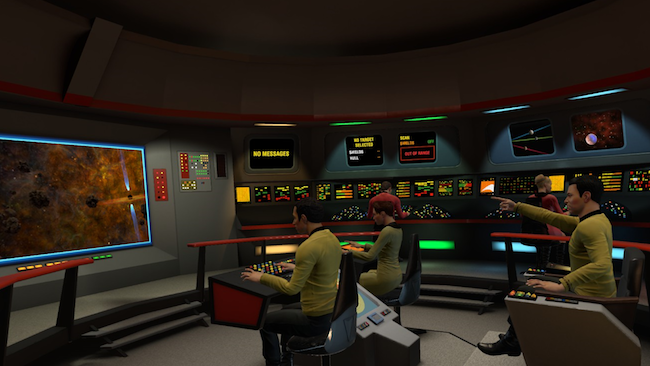
“Engage! Make it so! Second star to the right and on till morning! There’s coffee in that nebula!”

Star Trek: Bridge Crew exceeded my expectations in every single way possible while also setting the bar for my future VR experiences to an unthinkable level. The sheer polish applied to every aspect of this game is obvious, as is the love that clearly went into designing it. As a life-long Star Trek fan, I can say this is the game I’ve sat up at night dreaming of, and, now that it’s here, I can only dream of what can be added to it. I hope Red Storm Entertainment and Ubisoft set out on a five year mission to continue expanding this game, to explore strange new worlds, seek out new life and new civilizations and to boldly go where no Star Trek game has gone before. Make it so!











